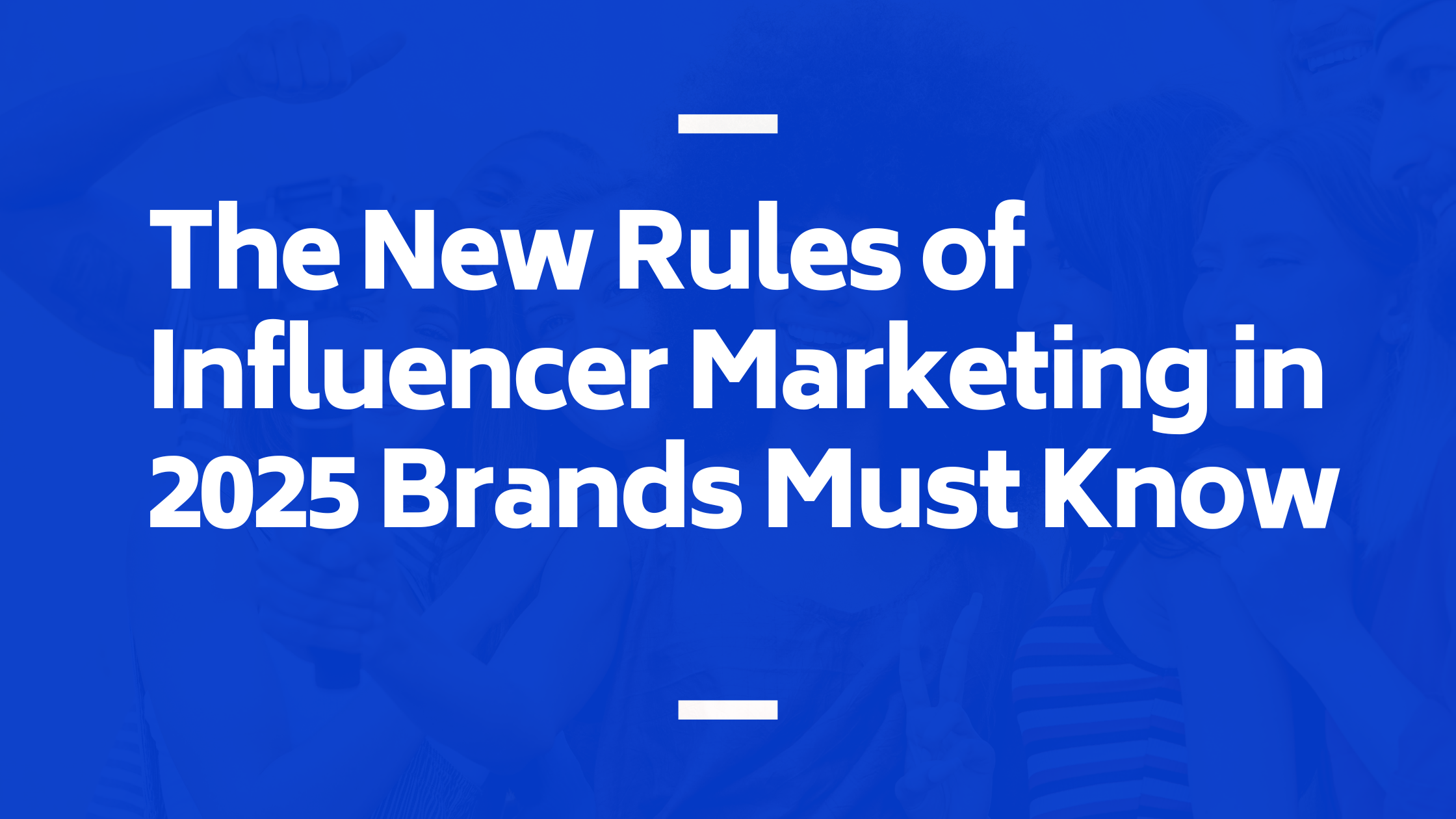The New Rules of Influencer Marketing in 2025 Brands Must Know

Influencer marketing isn’t what it was five years ago.
In 2025, platforms, audiences, and expectations have all shifted. Consumers now demand more authenticity. Algorithms favor relevance over reach. Brands that fail to evolve are losing attention—and money.
Today’s influencer strategies require data, transparency, and long-term thinking. Short-term collaborations and vanity metrics like follower counts don’t cut it anymore.
Let’s break down the new rules that matter now.
1. Authenticity > Aesthetic
Perfect feeds are no longer trusted.
In 2025, realness wins. Audiences value unfiltered content, opinions, and transparency.
Influencers are leaning into storytelling. They’re sharing behind-the-scenes, personal struggles, and unscripted moments.
Brands must let go of strict creative control and allow influencers to be themselves.
Tip: Choose creators whose audience overlaps with your ideal customer. Trust them to tell your brand’s story in their voice.
2. Micro and Nano Influencers Deliver Higher ROI
Bigger isn’t always better.
Micro (10K–100K followers) and nano influencers (under 10K) now drive better engagement and conversion.
They maintain close-knit communities that trust their opinions.
These smaller creators are more affordable and often open to creative deals—barter, revenue share, affiliate links.
Tip: Build long-term relationships with micro-influencers in your niche. Consistency builds trust.
3. AI-Generated Influencers Are on the Rise
Welcome to the age of virtual creators.
AI influencers are gaining ground, especially in fashion, tech, and lifestyle.
They’re cost-effective, scalable, and controversy-free.
Some brands even create their own CGI avatars to represent their identity online.
But real human connection still matters—AI works best in hybrid strategies.
Tip: Test AI influencers for visual campaigns, but pair them with human creators for relatability.
4. TikTok, Instagram, and YouTube Shorts Lead the Way
Short-form video is king in 2025.
TikTok continues to dominate Gen Z.
Instagram Reels and YouTube Shorts are right behind.
Static posts have low reach. Stories and carousels still help—but video is the main driver of discovery and engagement.
Tip: Collaborate with influencers to create native video content that blends seamlessly into users’ feeds.
5. ROI Tracking Is Non-Negotiable
Every influencer dollar needs to prove its value.
Brands now demand performance data—reach, engagement, saves, link clicks, conversions.
UTM tags, affiliate codes, and custom landing pages are standard.
Influencer marketing has matured into a measurable, ROI-driven channel.
Tip: Use tools like Grin, CreatorIQ, or in-platform analytics to measure results accurately.
6. Long-Term Partnerships Work Better Than One-Offs
2025 is about relationship building.
Single sponsored posts feel transactional. Audiences spot ads instantly and skip over them.
But when influencers integrate a brand into multiple touchpoints, trust and sales grow.
Long-term brand ambassadors feel more authentic and are more invested in your success.
Tip: Sign influencers for 3–6 month partnerships to build brand familiarity and retention.
7. Compliance and Disclosure Matter More Than Ever
Regulators are watching.
FTC and global bodies now require clearer disclosure.
#Ad and “Paid Partnership” aren’t enough—disclosures must be upfront, visible, and easy to understand.
Fines and reputation damage await non-compliant campaigns.
Tip: Train your influencers. Provide sample disclosures and monitor posts closely.
Success in 2025 demands a shift in mindset.
It’s no longer about flashy promotions. It’s about building trust through real voices, creative content, and measurable results.
Brands that adapt to these new rules will win attention, loyalty, and revenue.









Leave a Reply